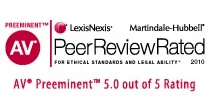Tenth Circuit Finds Ambiguous and Interprets in Favor of the Insured “That Particular Part” Language in CGL Policy Exclusions j(5) and j(6)
In MTI, Inc. v. Employers Insurance Co. of Wassau, 913 F.3d 1245 (10th Cir. 2019), the Tenth Circuit addressed the language “that particular part” in exclusion j(5) and j(6) in a CGL policy. An insured contractor was engaged to perform repair work on a cooling tower, specifically work to remove and replace anchor bolts used to attach braces supporting the tower. The insured removed the bolts, but because an additional trade was not yet at the site, the insured did not immediately replace the bolts and left the tower overnight without braces. Overnight high winds damaged the tower necessitating the removal and replacement of the entire cooling tower. After a demand by the tower owner that the insured contractor pay the cost of replacing the tower, the insured filed a claim with its CGL insurer. The insurer denied coverage based on exclusions j(5) and j(6) in the policy, and a federal district court granted summary judgment for the insurer on the grounds that the claim was excluded by both exclusion j(5) and exclusion j(6).
Exclusion j(5) operates to exclude coverage for: “That particular part of real property on which you or any contractors or subcontractors working directly or indirectly on your behalf are performing operation, if the ‘property damage’ arises out of those operations.” Exclusion j(6) operates to exclude coverage for: “That particular part of real property that must be restored, repaired or replaced because ‘your work’ was incorrectly performed on it.”
The Tenth Circuit focused on the “that particular part” language as the “key phrase” for purposes of exclusions j(5) and j(6). Courts around the United States are split on whether “that particular part” broadly means the entire property on which the insured was performing work or more narrowly means only that portion of the property on which the insured performed the defective work. See e.g., Fortney & Weygandt, Inc. v. American Manufacturers Mutual Ins. Co., 595 F.3d 308, 311 (6th Cir.2010); Jet Line Services, Inc. v. American Employers Ins. Co., 537 N.E.2d 107, 111 (Mass. 1989);.
The Tenth Circuit found “that particular part” to be ambiguous because it “could be read to refer solely to the direct object on which the insured was operating,” and “[a]lternatively, it could apply to those parts of the project directly impacted by the insured party’s work.” As a result of having found the language ambiguous, the court narrowly construed the language in a manner favorable to the insured and held “that particular part” must be read “to refer to the distinct components upon which work is performed.”
While not necessary for the court’s decision, the court went out of its way to reject the insurer’s argument that reading the language broadly as providing coverage would convert a CGL policy into a performance bond. CGL insurers regularly make this argument, contending that a CGL policy is not intended to serve as a guarantee of the quality of the insured’s work. The court distinguished between the two, stating that a performance claim would be for the cost of replacing the missing anchor bolts, whereas here the claim was for damage caused as a result of the failure to properly install those bolts.




















